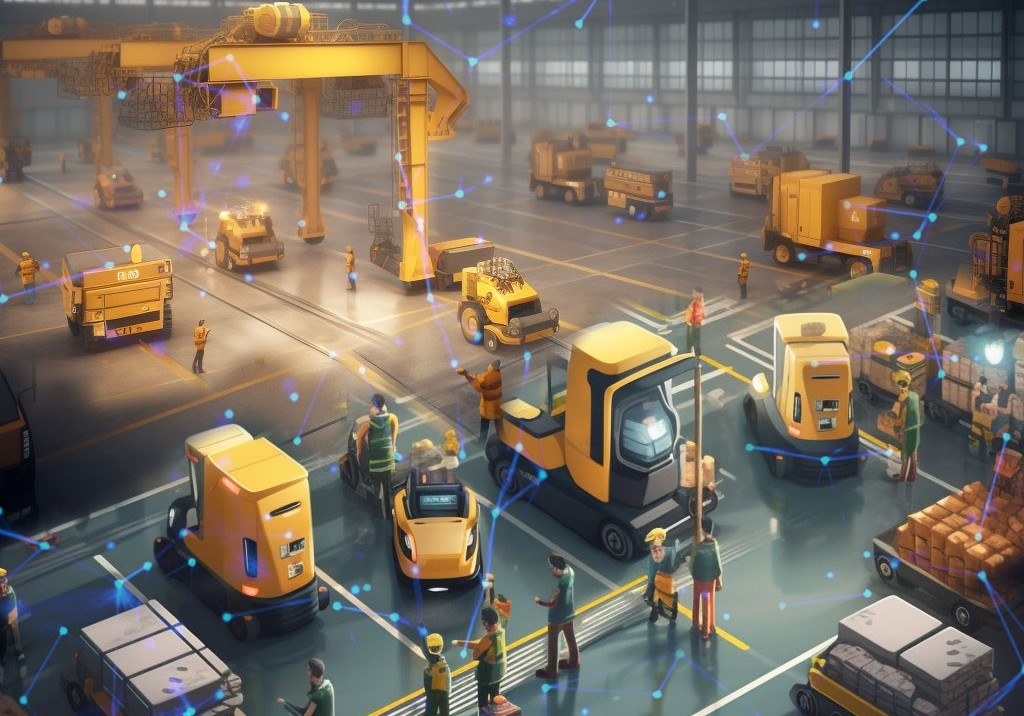March 26, 2024
The Mixed Fleet project enhances collaboration between machines and humans, accelerating the utilization of automation and boosting productivity. Companies can rapidly expand their automation offerings, being among the first in various product categories, as the most difficult to automate tasks are handled by humans. Utilizing automation reduces emissions, improves quality, enhances safety, and addresses labor availability challenges.
The growth in the automation of mobile work machines in the coming years will be achieved by enhancing collaboration between machines and humans. The industry is evolving rapidly, with machines from different manufacturers and performing various tasks being integrated into a common control system, enabling manual and automatic machines to work together. The adoption of automation will be expedited by assigning the most challenging tasks to humans or machines controlled by humans. This collaboration is fostered in the ten-million-euro Mixed Fleet research project.
“The need for optimizing work site tasks will become emphasized due to productivity and sustainable development. This is why we are developing new expertise for the building up and collaborative use of technically demanding machine groups. Additionally, new methods for quickly programming, flexible customization, and deployment of machine groups are needed. The key research areas of the project include the safety of collaboration, the required situational awareness, and the work management between humans and machines,” says Antti Siren, the Secretary-General of FIMA (Forum for Intelligent Machines), who leads the project.
The work machine manufacturers in Finland, as well as the subcontractors providing technology and software for them, are already world-class experts. The project lays the foundation for the growth of work machine automation in various worksites, logistics, and industrial environments. This enhances companies’ competitiveness and ensures the ability to introduce these machine systems to the market first.
From cranes to forklifts
The Mixed Fleet project is related to lifting equipment manufacturer Konecranes’ Zero4 program, which focuses on digitizing material flow management.
“Mixed Fleet is Konecranes’ Zero4 leading company program’s first co-funded project. Its research topics have been on the top of our research priority list. We believe that in the future material movements in industrial processes will be done by a fleet of mixed machinery, characterized by various levels of autonomy and automation that operate in the same space with human operators. Ensuring the safety of this entity is particularly important for us”, says Mikael Haag, Research Funding Director at Konecranes.
The project’s corporate partners include Mitsubishi Logisnext Europe, a provider of high-tech logistics solutions such as forklifts and automation systems, Navitec Systems, a software and service provider specializing in navigation, vehicle control, and fleet management, as well as Atostek, a software company specializing in robotics, among others.
“Already today, logistic solutions consist of both automatic and human-operated forklifts along with their control systems. Once the special skills of people and the efficiency of automation are optimally harnessed, any remaining hindrances for fluent and enjoyable cooperation between humans and robots cease to exist. The diverse research aiming for future logistics should be conducted collaboratively – just as the final logistic solutions are implemented for real customers”, says Anna-Kaisa Repo, Project Manager at Mitsubishi Logisnext.
“It will be crucial in the future that humans and automated machines can work together as effectively as possible. We believe this research project is a great opportunity to learn what is required from the software that controls the automated vehicles to make this collaboration as smooth as possible. It is not only us or the robots that benefit from this research, as the goal is to use the software to improve the safety and the working conditions of everyone working in the field.” says Aleksi Ålander, Vice President of Engineering at Navitec Systems.
Research institutions involved in the project are the Tampere University and VTT. The three-year joint project is funded by Business Finland, as well as companies and research institutions. The pilot implementation of the project will take place at Konecranes’ factory in Hyvinkää, Logisnext’s demo center in Järvenpää, and with the assistance of Kalmar in demanding outdoor conditions at the Kouvola rail terminal. Leanware contributes expertise in operations control to the project. The project has been prepared based on shared future visions of member companies of FIMA and the DIMECC-led VAMOS ecosystem for Autonomous Mobility and Smart Spaces.

